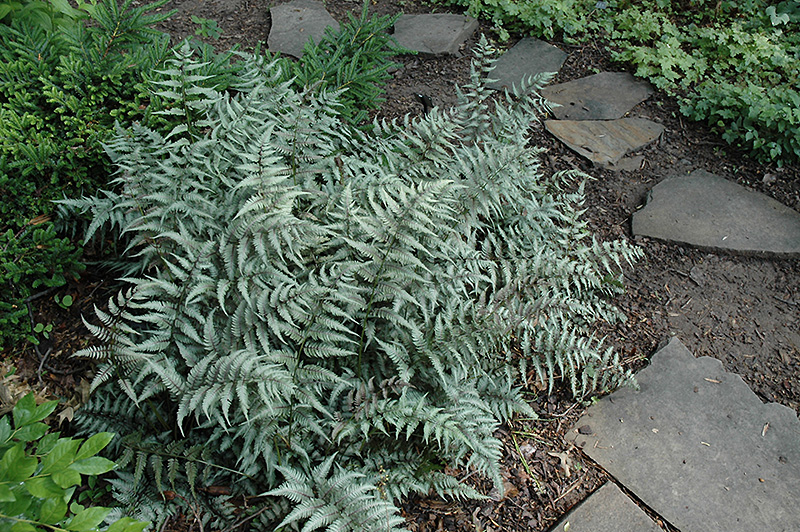Height: 18 inches
Spread: 24 inches
Sunlight:
![]()
![]()
Hardiness Zone: 3a
Other Names: Athyrium nipponicum
Description:
A rare departure from the deep greens of the shade garden with seemingly hand painted airy fronds; the silvery tips almost seem metallic; truly a visual feast for the shaded areas of the garden
Ornamental Features
Japanese Painted Fern is primarily valued in the garden for its cascading habit of growth. Its attractive ferny bipinnately compound leaves remain grayish green in color with prominent silver tips throughout the season. The dark red stems are very colorful and add to the overall interest of the plant.
Landscape Attributes
Japanese Painted Fern is a dense herbaceous fern with a shapely form and gracefully arching fronds. It brings an extremely fine and delicate texture to the garden composition and should be used to full effect.
This is a relatively low maintenance plant, and usually looks its best without pruning, although it will tolerate pruning. Deer don't particularly care for this plant and will usually leave it alone in favor of tastier treats. It has no significant negative characteristics.
Japanese Painted Fern is recommended for the following landscape applications;
- Mass Planting
- Border Edging
- General Garden Use
- Groundcover
- Naturalizing And Woodland Gardens
Planting & Growing
Japanese Painted Fern will grow to be about 18 inches tall at maturity, with a spread of 24 inches. Its foliage tends to remain dense right to the ground, not requiring facer plants in front. It grows at a slow rate, and under ideal conditions can be expected to live for approximately 15 years. As an herbaceous perennial, this plant will usually die back to the crown each winter, and will regrow from the base each spring. Be careful not to disturb the crown in late winter when it may not be readily seen!
This plant does best in partial shade to shade. It requires an evenly moist well-drained soil for optimal growth, but will die in standing water. It is particular about its soil conditions, with a strong preference for rich, acidic soils. It is somewhat tolerant of urban pollution, and will benefit from being planted in a relatively sheltered location. Consider applying a thick mulch around the root zone over the growing season to conserve soil moisture. This species is not originally from North America, and parts of it are known to be toxic to humans and animals, so care should be exercised in planting it around children and pets. It can be propagated by division.







